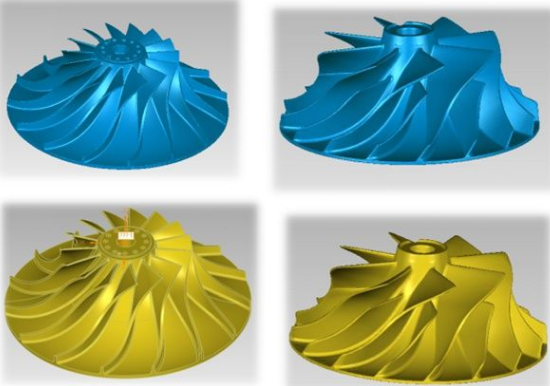Nowadays, many companies begin using the reverse engineering service to finish their projects, which is a powerful way to create digital designs for a physical part and can be a valuable tool in your prototyping toolkit alongside technologies like 3D scanning and 3D printing. Here’s everything about 3D scanning reverse engineering.

3D Scanning Reverse Engineering Design
The so-called reverse engineering technology is to carry out 3D scanning and data acquisition on the original shape of the physical object, and construct a three-dimensional model with the same shape and structure through the process of data processing and three-dimensional reconstruction. Then, the original shape is copied or redesigned on the basis of the original shape to realize innovation. Therefore, reverse engineering is not a simple process of 3D scanning and copying. The purpose of reverse engineering is to obtain the point cloud by using the physical object, and carry out optimization design and innovative design based on the point cloud. Of course, reverse design is not mysterious. It is closely related to our life. The upgrading and transformation of bicycles in daily life and the increasingly flawless automobile streamline are inseparable from reverse design.
Applications of Reverse Engineering
So when is reverse engineering needed? Ipqcco found that reverse engineering is mainly applied to the following aspects.
1. Obtain the parametric model that can be edited by 3D software, which is convenient for machining enterprises such as NC machine tools to process materials.
2. In order to obtain more reasonable data structure, such as the improvement of automobile shape streamline modeling, the improvement of turbine blade, etc. Through reverse engineering design, the scanned data are modified to achieve the purpose of optimization and innovation.
3. In order to obtain two-dimensional drawings. Machining enterprises generally pay more attention to the acquisition of two-dimensional drawings. Reverse engineering can obtain the three-dimensional model of the object through the reverse design of scanning data, and the two-dimensional drawings of any section of the object can be obtained conveniently and quickly in the drawing software.
Reverse Design Service Process
Reverse engineering has been widely used in many aspects, and some websites have also developed reverse service modules. The following is the service process of reverse design.
1. Obtain point cloud data through 3D scanner or point cloud data provided by customers.
2. Process the point cloud data through software (Geomagic, GOM, etc.) to obtain the triangular mesh surface data. Including STL data for coordinate change, point cloud noise reduction, smoothness, optimization, simplification and other preprocessing. The data obtained in this step can be used for 3D engraving, 3D printing, comparative analysis, etc.
3. Through the reverse software, the reverse software can generally use UG, CATIA, Geomagic DX and other professional software to process the obtained triangular mesh surface data. Including patch fitting, section creation, curve extraction and many other feature extraction methods. At this time, innovative design and optimization design can be carried out.
4. The reverse parameter model is obtained through a series of operations such as software calculation, extension and cutting. The model can be used for high-precision CNC machining and die design.
Through the above four steps, we can complete the reverse engineering design for a part. Through reverse engineering design, we can not only obtain the parametric model, but also obtain the STL data of the model for comparative detection and three-dimensional engraving. At the same time, we can obtain the parametric model and optimize the design.